 
|
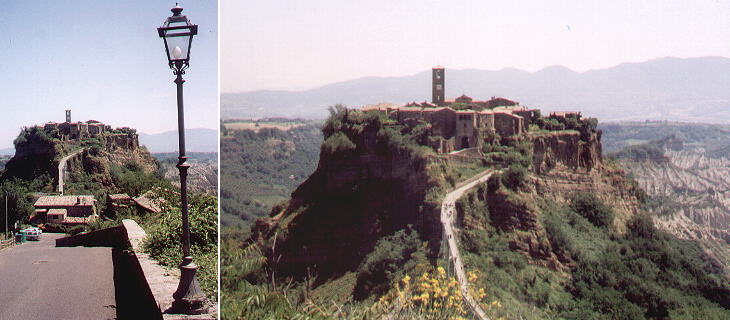 | ||
Civita (city) as the oldest part of Bagnoregio is called, is now completely isolated from the plateau to which it was once united by a ridge.
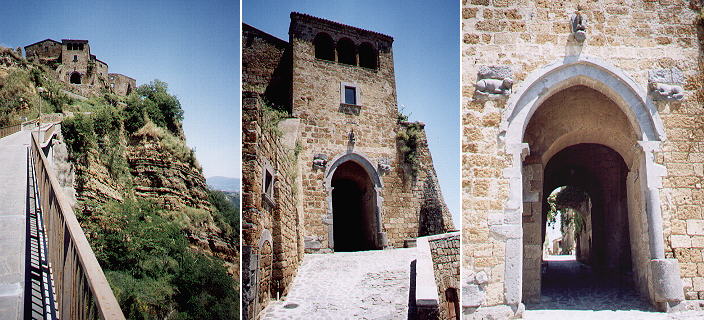 | ||
The only access to Civita is through a light modern pedestrian bridge leading to the only remaining gate (Porta di S. Maria). The gate is protected by a tower and it is decorated with reliefs (one of which is shown as background image of this page).
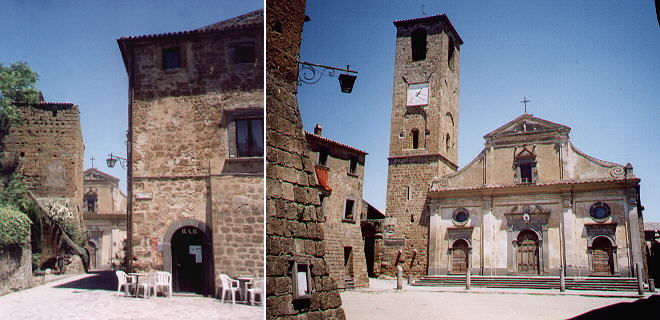 | ||
Cars cannot reach Civita and one immediately after having crossed the gate realizes how much the site gains from this fact.
The church of S. Donato was the cathedral of Bagnoregio until 1699, when this role was assigned to a new church built in the safer area where most of the inhabitants had moved. It has an elegant Renaissance fašade while the interior is medieval.
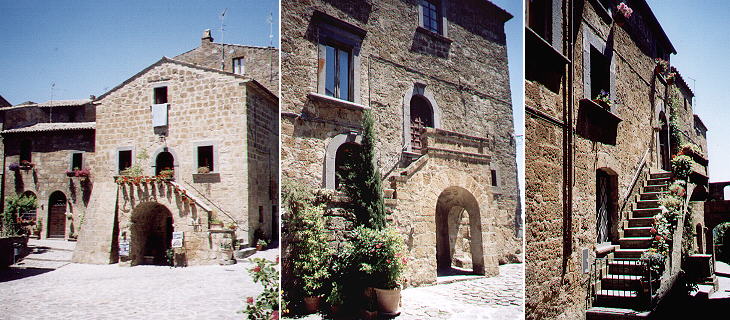 | ||
Today Civita is springing up anew. The difficulty of access which caused its almost total abandonment, today attracts people who look for a quiet buen retiro (good retreat). Most of the medieval houses in the central area of Civita have been restored in recent years.
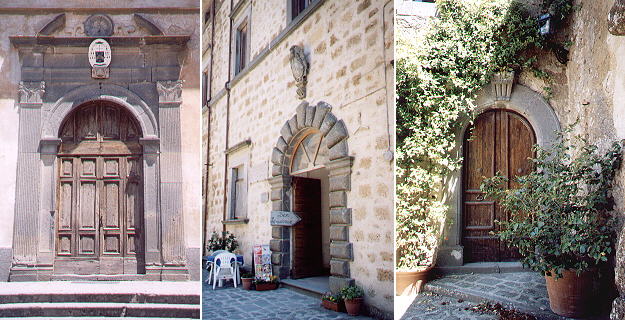 | ||
Many architectural features of Civita show that it was the centre of Bagnoregio well into the XVIth century, while there are no signs of the styles which were developed later.
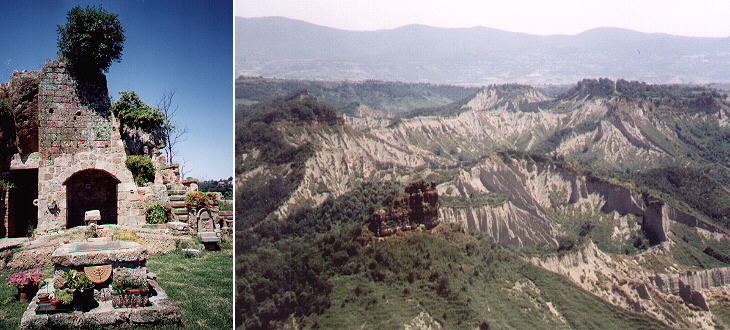 | ||
Civita ends with a small terrace near a short stretch of the ancient walls. From there one can see a vast area where almost all of the tufa rocks have disappeared, thus exposing to view the layers of clay which lay below them. In a way, the view shows the destiny of Civita.
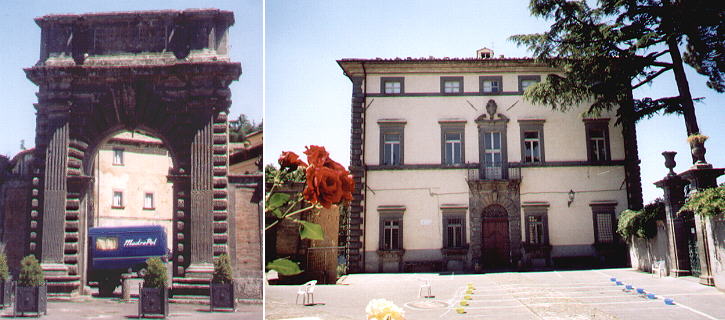 | ||
Towards the end of the XVIth century what in medieval times was a suburb of Bagnoregio gradually became its main centre. At the end of that century the erection of a fine Renaissance gate was a sort of confirmation that the new town was taking over the old one.
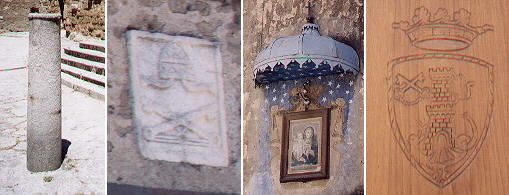 | ||
In and about Viterbo - other pages:
Viterbo
Bagnaia
Bomarzo
Orte and Vasanello
S. Maria della Querce
S. Martino al Cimino
Tuscania
Vitorchiano
Walks with Ferdinand Gregorovius in the Roman countryside
some other walks:
A walk to Porta Furba
Via Appia Antica from Cecilia Metella to Torre in Selci
Via Appia Antica from Torre in Selci to Frattocchie
See my Home Page on Baroque Rome or my Home Page on Rome in the footsteps of an XVIIIth century traveller
All images © 1999 - 2004 by Roberto Piperno. Write to romapip@quipo.it
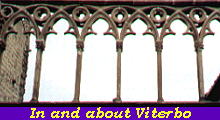 Bagnoregio
Bagnoregio